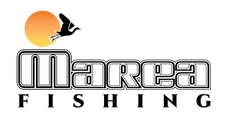Top 4 Mullet Fishing Lures
Every spring along Florida's east coast, millions of bait fish called mullet move along's Florida's east coast south towards the Florida keys and across Florida bay avoiding predation every step of the way. It's a phenomena that coastal anglers have become addicted too as a slew of saltwater predators such as sharks, tarpon, red drum, snook, speckled trout, jack crevalle, and a number other species gorge on this coveted Florida forage.
In over 3 decades of experience fishing the mullet run, I've honed my lure arsenal selection to 4 lures including a combination sizes & styles. I've always been a loyal fan of truly matching the hatch, so finding a lure that has realistic colorations to a finger mullet is key.
Ever wonder why 2 different anglers using the same lure, same color, and same action in the SAME location will experience different levels of success?
This is in part mainly due to experience with that specific lure and their comfort level throwing it. The other part being the years of experience, patience in observing patterns and fish behavior. It's no wonder why many seasoned mullet run junkies secretly know that 90% of the fish are caught by 10% of the anglers. It's not that the passion is lacking from the larger audience, but yet the patience to observe the environment, due diligence in research, and quickly adapting to the changing conditions to capitilize on a getting bit.
Matching the profile of each baitfish mass is crucial to staying connected with the packs of tarpon, snook or jacks terrorizing the mullet. It's best to keep that mentality in mind on the regular if you plan on having any level of success. Location, depth, and flow of the tide will also dictate which offering is best suited for your specific area and feeding stage of the tide.
 Casting lures along the beach this time of year will often demand a profile big enough to catch the attention of these inshore marauders but also be heavy enough to easily punch through the wind and reach the feeding fish, usually past the breaking waves. The reverse is also true for the inland and calmer waters where a smaller profile featuring minimal water entry is needed for a stealthier approach. The Top 4 Spring Mullet Run lures in my bag are below and I will share in detail why I've chosen each one.
Casting lures along the beach this time of year will often demand a profile big enough to catch the attention of these inshore marauders but also be heavy enough to easily punch through the wind and reach the feeding fish, usually past the breaking waves. The reverse is also true for the inland and calmer waters where a smaller profile featuring minimal water entry is needed for a stealthier approach. The Top 4 Spring Mullet Run lures in my bag are below and I will share in detail why I've chosen each one.When fishing during the spring bait run in Florida, artificial lures can significantly increase your chances of a successful catch, especially when targeting inshore gamefish like snook and tarpon. At last, we highlight several effective lure styles that can mimic the frantic movements and appearances of mullet, which are essential for attracting predatory gamefish like snook, tarpon, or jack crevalle. Here’s a detailed exploration of these recommended lures and some tips on how to use them effectively.
Topwater Plugs
Topwater plugs are incredibly effective during the spring run, particularly in the early hours of the morning when the fish are most active along the beaches and inlets. These lures work well because they create visible disturbance on the water surface, mimicking injured baitfish. These are perhaps the most exciting lure style to fish as it's all a visual fishery since these are referred to as floating lures. The most common are the Heddon Zara spook, Mirrorlure Top Dog, and Rapala Skitterwalk. Each brand has pattern that resembles a finger mullet, so just be sure to pick the length best matching the forage you are fishing. Knowing how to effectively work a topwater lure is a science all it's own & takes time to master. Anyone can get lucky hooking a few fish, but the numbers come with patience and the ability to anticipate fish feeding behavior. Swapping out the front treble hook for a single hook can also reduce damage and make unhooking easier while not impacting the hookup ratio.
Subsurface Plugs

When the topwater bite slows, switching to subsurface plugs can keep the strikes coming. These lures dive just below the surface and are excellent for mimicking the swimming action of fleeing mullet. Subsurface plugs such as Marea Fishing's Motion Minnow segmented swim baits or Rapala's subwalk are particularly appealing to tarpon but can also trigger aggressive responses from jacks or trophy snook, which are often lurking just below the mullet schools.
Soft Plastic Jigs
Finally, soft plastic jigs with paddle tails such as Z-man's diesel minnow or DOA's soft plastic bodies, are a go-to for their realistic swimming motion and the ability to cover different water columns effectively. These are particularly useful in surf conditions and nearshore waters where snook may be feeding on smaller fish. The vibration and movement of paddle tail jigs make them irresistible to predatory fish. The subtle texture of a soft plastic lure also aids in keeping the fish committed to holding onto the lure longer allowing for a solid hook-set. Some soft plastic junkies go as far as to inject their favorite plastics with menhaden oil or mullet scented aromas.
Swimbaits
This refers to a lures that have a typically longer, elongated profile and have the appearance of a mullet. They can vary in material and body construction from soft plastic bodies, weighted by an internal lead molded to a hook such as Storm's wildeye Shad. This type of swimbait is a staple in most coastal anglers bag and is a great search bait. Savage Gear's Pulse tail mullet & Z Man's Mulletron line through mullet imitations are also excellent options for those who opt for a soft body feel when getting bit. Another advantage of this inline design is that it take the leverage away from the fish as the lure weight is released up the line and a single hook-set is keeping you connected. Marea Fishing bridges the gap with their Motion Minnow segmented lures that offer the flexibility and lifelike swimming actions, typically exhibited through the use soft plastic baits and are available in both fast sinking & slow sinking models. Which ever you lean towards, hard or soft, selecting the correct size along with the action of swim bait should also be a top priority if you plan on staying tight consistently.
Using These Lures Effectively

-Match the Hatch: Always select a lure size and color pattern that resembles the local mullet, especially during a major bait migration. Observing the size and behavior of the baitfish can help you choose the most effective lure for the conditions you are facing.
- Vary Retrieval Speeds: Mixing up retrieval speeds can mimic wounded or erratic baitfish, which is often more enticing to predators like jacks or tarpon. On several occasions, slowing down the lure then, making one quick handle turn can ignite a curious trophy fish to instinctively strike purely from reaction.
-Time Your Fishing: Dawn and dusk are typically the best times to use these lures,as snook and other predators are more active during lower light conditions. Nighttime is the right time as snook and tarpon are habitual nocturnal feeders and utilizeshadow lines and breaks in the water flow to ambush schools of mullet.
- Lure placement: When casting your lure to where you believe the fish are staging up to feed, it's always a good idea to pitch it several feet up-current as the tide will push your offering into the strike zone. On windy days or evenings, it takes some fine tuning to dial in where the fish will commit. A foot or so off the mark, will make the difference between getting a fish to commit or getting skunked.
 By using these lures and techniquessuggested, anglers can enjoy a fruitful fishing experience during the Florida's mighty spring baitfish run.
By using these lures and techniquessuggested, anglers can enjoy a fruitful fishing experience during the Florida's mighty spring baitfish run.Remember, the key to successful lure fishing is not just about the lure itself but also how you present it to mimic natural prey movements convincingly.
So remain diligent, pay attention to any nuisances that are unfolding as the mullet schools are pushing through and learn quickly by adapting to how the fish are feeding and how you effectively you are responding to any changing scenario.





